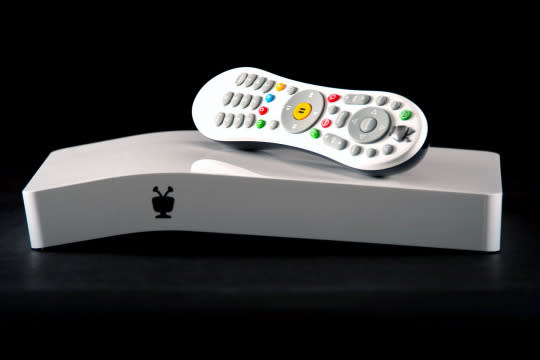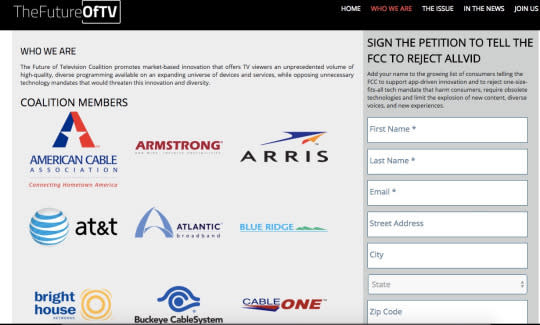Big Cable to FCC: Kiss Our Apps

(By Rob Pegoraro/Yahoo Tech)
Ever since Federal Communications Commission chairman Tom Wheeler said last week that the FCC would move to open up the market for cable boxes, the cable industry has had one response: Relax, we’ve got this!
Where Wheeler called for open standards that would let pay-TV viewers watch the channels they pay for on the gadgets and apps of their choice, cable operators say they’re already making that choice happen by shipping a growing variety of apps.
In other words: The feds want you to be able to tune into “The Bachelor” and “WWE” via your next smart TV or TiVo, or apps on an Apple TV, Roku, Xbox, iPad, or other media streaming device. Big Cable says it likes apps too — but it’s being a lot pickier about which devices they run on.
At stake: potentially tens of billions of dollars pay-TV customers shell out each year in equipment rental fees.
Boxed in
The underlying issue represents one of the TV business’s longest-running and most-annoying re-runs. Almost 20 years ago, Congress told the FCC to give viewers a way to buy the box of their choice, and precious little has changed since.
A survey of the top 10 pay-TV firms released last year by Sens. Edward Markey (D.-Mass.) and Richard Blumenthal (D.-Conn.) estimated that 99 percent of subscribers still rent a box at an average cost of $89.16 a year.
With 2.6 boxes per household, the average yearly household expense comes to $231. And with 221 million leased boxes in circulation, we could collectively be forking over $19.7 billion a year on video hardware we’ll never own.
In return, we’ve been given button-strewn remotes, clunky onscreen menus, and bulky boxes that only recently stopped being egregious electricity hogs.
And even though cable operators control the design and distribution of these boxes, they seem to have a lot of trouble replacing older boxes in their customers’ homes. Almost four years after Comcast’s nationwide launch of the well-regarded X1 platform, only about 25 percent of subscribers have it.

The TiVo Bolt is one of a handful set-top boxes that still support the CableCard standard, so you can use it instead of renting a box from your cable company (Photo: TiVo).
The closest the FCC has gotten to cracking open the market has been the much-beleaguered CableCard standard, which doesn’t work with satellite boxes and now only sees support from TiVo recorders and a handful of other tuners.
In 2014, cable operators finally persuaded Congress to free them from having to use CableCards in their own boxes. However, that same bill also told the FCC to look into possible CableCard successors. Now the commission is doing just that — hence the current battle over open boxes.
Now what?
Wheeler’s proposal involves a fair amount of hand-waving. As an FCC document explains, it would not set a government standard for receiving cable, satellite, or fiber-optic TV, but would instead require pay-TV services to provide “any published, transparent format that conforms to specifications set by an independent, open standards body.”
In plainer English, pay-TV companies could continue to rent proprietary boxes as long as they also specify some other method — they don’t even have to agree on the same one — that other companies can build into their products.
As an FCC senior official explained in a phone interview Monday, that would allow the Comcasts and Time Warners of the world to keep selling their existing cable bundles, but would also let other companies offer not just their own apps but their own interfaces to the dozens or hundreds of channels you don’t actually watch.
That official did not say how long it might take to nail down any published, transparent format.
The cable industry is not amused, but its statements so far may not make it any friends.

The Future of TV coalition needs your help to reject an FCC proposal that died five years ago (Image: Future of TV Coalition).
For example, a blog post from the National Cable & Telecommunications Association—the same trade group Wheeler ran from 1979 to 1984— denounced the proposal for “forcing additional hardware into the home of viewers.” Yes, the cable-box people now oppose cluttering up the TV stand and the coffee table.
Another questionable claim: The statement by the NCTA and others — including the “Future of TV Coalition,” an un-ironically named group created to block cable-box regulation— inaccurately call Wheeler’s proposal “AllVid.” That name refers to a 2010 FCC proposal to mandate a video-gateway adapter in the house; last week’s offering includes no such hardware requirement.
An apathetic app approach
NCTA and the Future of TV folks would rather talk about the cable industry’s move towards streaming-video apps. “They’re easy to use, they’re free to download, they don’t require additional hardware, and they work almost anywhere,” NCTA’s post touts.
“Comcast is using apps to deliver its Xfinity service to popular customer-owned retail devices,” wrote Comcast senior vice president Mark Hess in a like-minded post.
But not all apps are as adept. If you want an app that lets you watch your pay-TV subscription on an actual TV, you’ll almost always first need a traditional box for at least one set, and not all cable companies even offer that option.
For instance, Time Warner Cable, Charter, AT&T, and Verizon all offer apps for at least a Roku, an Xbox, or an Amazon Fire player.

Time-Warner Cable’s Roku app (Image: TWCableUntangled).
(TWC recently went a step further by launching an option for New York-area viewers that ditches cable boxes entirely and instead relies on Roku players running its own app.)
Comcast, however, has yet to ship an app for a streaming-media player; it also hasn’t added support for AirPlay or Chromecast wireless video output to its iOS and Android apps. Cox only offers Web viewing. Dish Network allowed box-free (but not fee-free) viewing on secondary TVs but quietly stopped offering that “Virtual Joey” app last year.
Comcast’s answer when I asked why it has no app for Apple TV et al: It has to negotiate the rights for large-screen output.
I realize that can be a holdup—it earlier prevented video output in TiVo’s iPad app—but if Comcast’s smaller competitors could secure these rights, I’d like to know what’s stopping the biggest cable company in America.
So here’s my invitation to Comcast and every other company clamoring to keep the cable-box market out of the FCC’s clutches: If you want to prove you’ve moved beyond forcing customers to use your equipment for a fee, stop talking about apps and start shipping them for devices that can take the cable box’s place.
Email Rob at rob@robpegoraro.com; follow him on Twitter at @robpegoraro.
